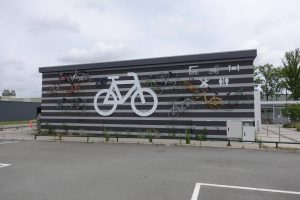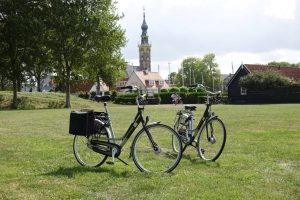 Our Walcheren Expedition, day 2, could be sub-titled “What I learned about cycling.”
Our Walcheren Expedition, day 2, could be sub-titled “What I learned about cycling.”
One of the things well known to our friends and family is that Richard cycles, and I don’t. That sounds like a simple fact of life, but it’s a lot more extreme than it sounds. Richard’s cycling involves owning about six bikes and more gadgets than you would believe. His gadgets measure everything. An entire community of online cyclists share information from these gadgets and congratulate each other on their prowess. Also there is lycra. A lot of lycra.
I did not own a bike as a child and was at university when I first learned to ride one. My mother had lost a cousin of some kind who was run over while cycling in London and refused to budge on the bike issue. Both my sister and I learned as young adults, but while she took to it, I didn’t. Travelling on two wheels seemed to make no sense to me. I did it, from time to time, but remained wobbly and uncomfortable.
Over the past 25 years, I have made fairly regular attempts to improve. There were rides round the Hertfordshire countryside and cycling weekends where I wondered if divorce was a rational option. Eventually, we moved to the Isle of Man which is basically a large hill and I pretty much gave up. I cycled around Lake Kielder on the Scottish borders with the kids about seven years ago, falling off all the way. Two years ago I chickened out of a cycle tour of Berlin. My cycling career was officially over.
I don’t know what made me decide that on Walcheren, I wanted to try again. Perhaps it was just because I knew it was incredibly flat. I’ve also been looking for exercises to help with my hip arthritis and have been told that cycling could be good. Whatever the reason, a couple of months ago I hauled my daughter’s old mountain bike out of retirement and took it down to the prom, probably the only flat area nearby, and wobbled up and down. By the time we arrived in Middelburg, I felt confident enough to give it a try. So on our Walcheren Expedition day 2, we rented bikes and set off into the unknown.
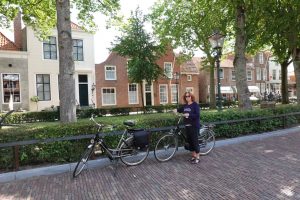
Things I learned about cycling…
- You never forget how to swim or how to ride a bike. Only one of those is true for me.
- In the Netherlands, the bike is king and road users take care not to endanger them. Tell that to the b*****d in the black van who forced me onto the pavement.
- Cycling is easier than walking. No. It’s really not.
- Every other cyclist on the road / cycle path is better than I am. Including the four year olds. Especially the four year olds.
- “Don’t worry, I’ll keep an eye on you” means “I will cycle off into the distance painfully slowly to make a point and not even glance behind me at your yell of pain.”
- Cycling on cobble stones is an experience.
- Nobody wears a cycle helmet in the Netherlands. This is WAY much more fun.
- Hardly anybody wears lycra to cycle. Also, much better. I feel normal.
- You can get to most places on cycle paths. This is AMAZING.
- I can cycle 28.3 kilometres in a day and still walk / go out to dinner / drink wine. I’m fitter than I thought.
- Cycling doesn’t hurt my arthritic hips at all.
- My shoulders would hurt less if I didn’t grip the bike in sheer terror.
- Renting a city bike from Cycle Hub in Middelburg is a great leveller and my super-cyclist husband was in more pain than I was at the end of the day because the bike was the wrong shape / height / age / type / colour.
- Nobody cares that I’m a clumsy oik on a bike here. Because cycling is just normal.
- I want to do more of this.
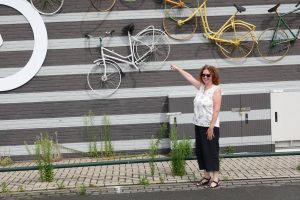 Perhaps it’s time to venture off the prom and try a few gentle hills at home…
Perhaps it’s time to venture off the prom and try a few gentle hills at home…

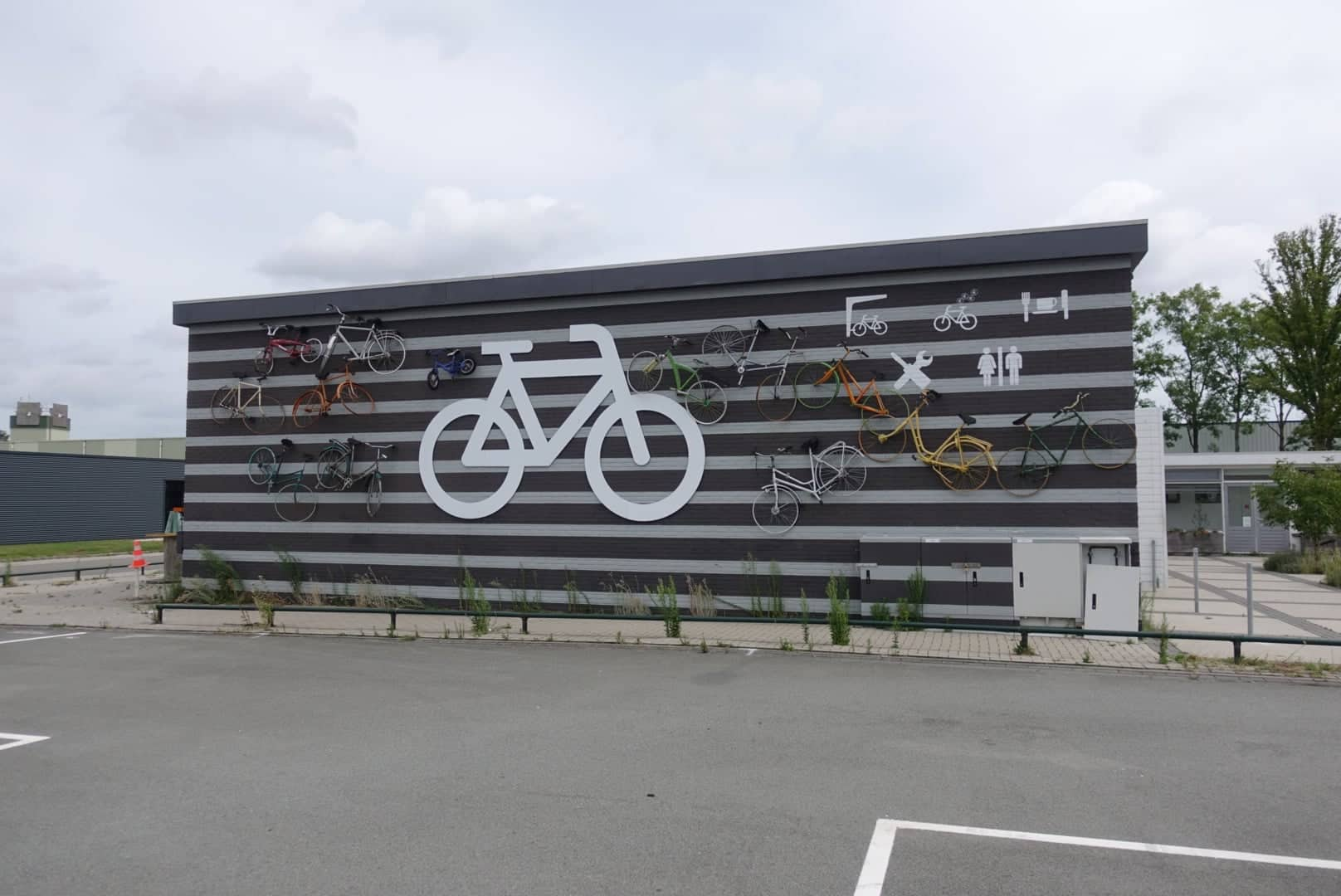
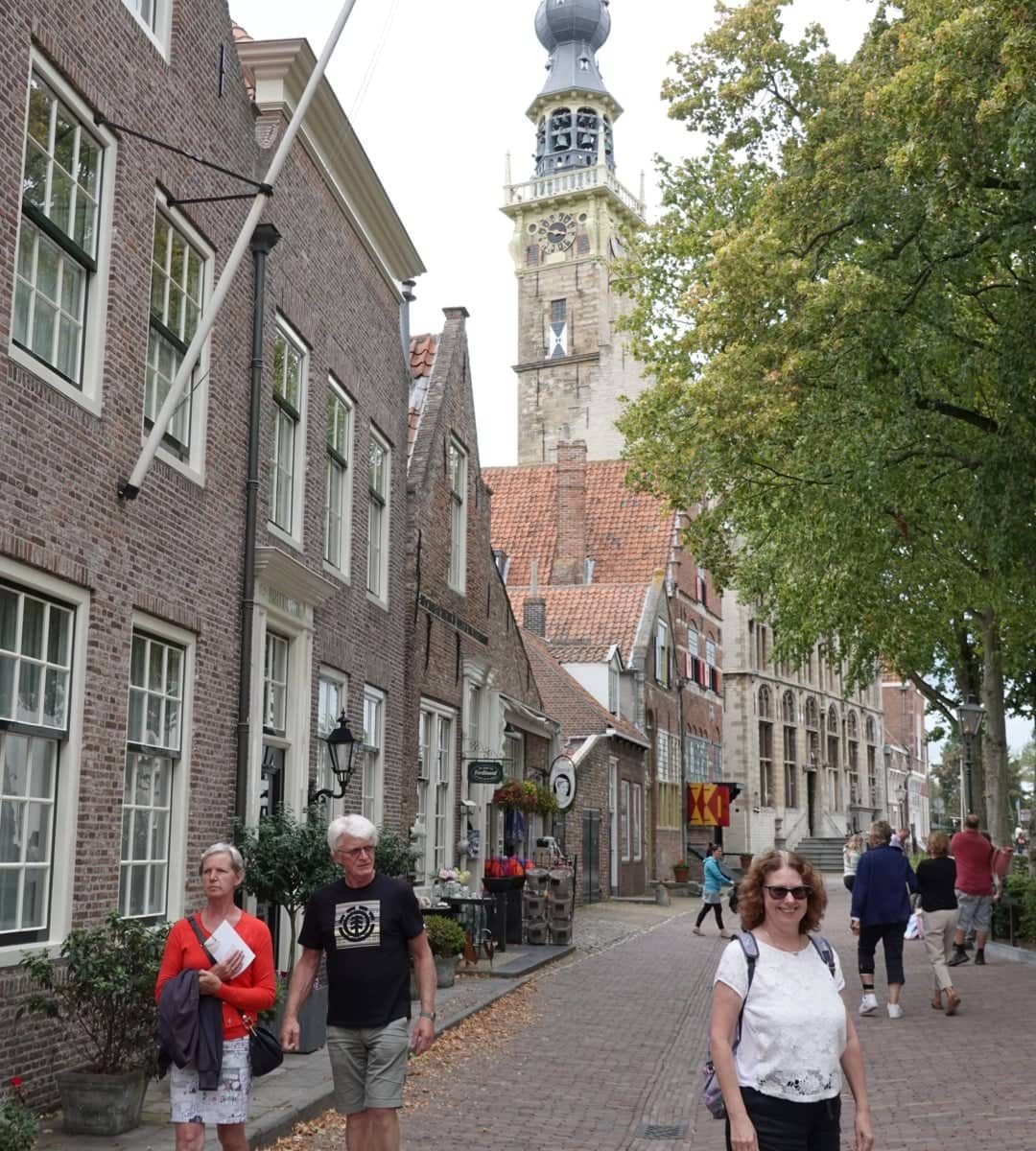
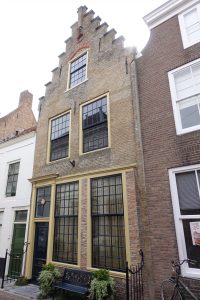 Given that, we were very fortunate to find an apartment, through Airbnb, on Korendijk, which is directly on the canal and is where my Dutch heroine, Katja de Groot, was living with her three children when the British invaded in 1809. Much to my joy,
Given that, we were very fortunate to find an apartment, through Airbnb, on Korendijk, which is directly on the canal and is where my Dutch heroine, Katja de Groot, was living with her three children when the British invaded in 1809. Much to my joy, 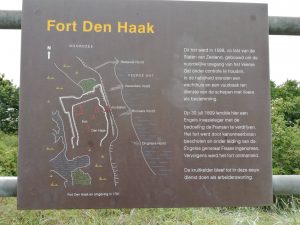 All the same, the wide beaches and strong winds definitely give a good sense of what Chatham’s men faced when they landed on Walcheren. We even managed to find the location of Fort Den Haak, where
All the same, the wide beaches and strong winds definitely give a good sense of what Chatham’s men faced when they landed on Walcheren. We even managed to find the location of Fort Den Haak, where  Following General Fraser’s trail, we drove to Veere, which is a beautiful little town which refused to surrender immediately to Lord Chatham’s army and was battered from both land and sea to persuade it to do so. There is a walk around the fortifications of Veere which we did, and it gives a good sense of the town defences, although most of what exists today was built from 1810 onwards when the French returned, including a fine selection of artillery from 1810 and 1811. We’ll be back to do the museums another day.
Following General Fraser’s trail, we drove to Veere, which is a beautiful little town which refused to surrender immediately to Lord Chatham’s army and was battered from both land and sea to persuade it to do so. There is a walk around the fortifications of Veere which we did, and it gives a good sense of the town defences, although most of what exists today was built from 1810 onwards when the French returned, including a fine selection of artillery from 1810 and 1811. We’ll be back to do the museums another day.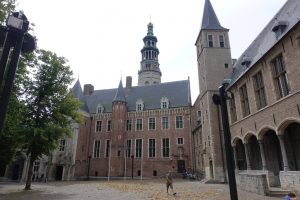 Later in the day we took a stroll around Middelburg to get our bearings and were impressed with Middelburg Abbey, where Lord Chatham set up his headquarters. Having seen Wellington’s various headquarters in the Peninsula over the past two years, it was clear that Lord Chatham was somewhat more set on luxury than Wellington, although now that I think about it, the Royal Palace in Madrid probably trumps Middelburg. Once again, we’ll be back to do the museums.
Later in the day we took a stroll around Middelburg to get our bearings and were impressed with Middelburg Abbey, where Lord Chatham set up his headquarters. Having seen Wellington’s various headquarters in the Peninsula over the past two years, it was clear that Lord Chatham was somewhat more set on luxury than Wellington, although now that I think about it, the Royal Palace in Madrid probably trumps Middelburg. Once again, we’ll be back to do the museums.